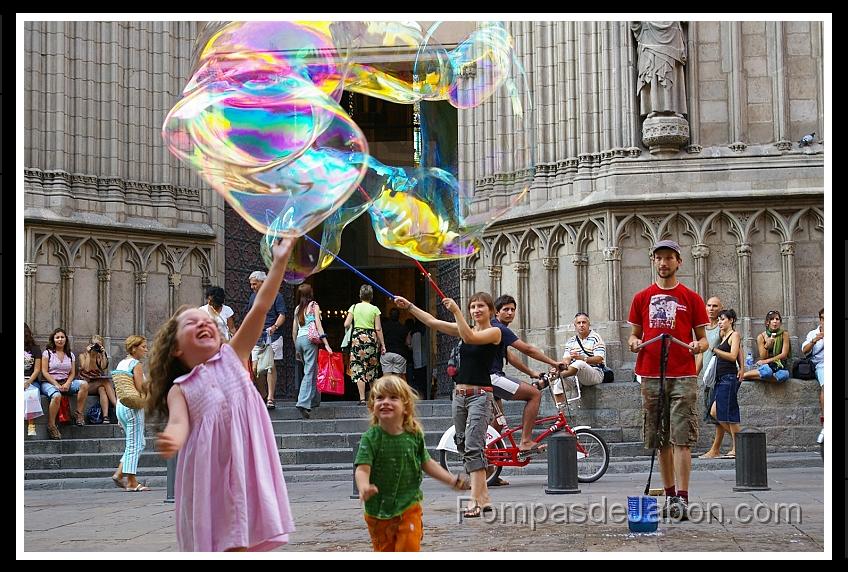Barcelona
Bubble
Events
Home >
Barcelona Bubble Man >
Bubbleology >
Bubble words >
Bubble formula for biggest bubbles in the world
What is so fascinating about bubbles?
The precise spherical shape,
the incredibly fragile nature of the microscopically thin soap film,
the beautiful colors that swirl and shimmer, or most likely, a combination of all these phenomena?
WHAT'S THAT STUFF?
SOAP BUBBLES
Why does a bubble form a sphere at all?
Let's look at the forces that mold bubbles.
The simple interaction between soap and water molecules leads to bubble formation
BUBBLEOLOGY Bubbles form easily with the right mix of soap and water.
A soap bubble is a spherical layer of soap film encapsulating air or gas.
The film consists of a thin sheet of water sandwiched between two layers of soap molecules.
One end of each soap molecule is hydrophilic, or attracted to water.
The other end consists of a hydrophobic hydrocarbon chain that tends to avoid water.
The hydrophobic ends of the soap molecules crowd to the surface, trying to avoid the water, and stick out away from the layer of water molecules.
As a result, water molecules separate from each other.
The increased distance between the water molecules causes a decrease in surface tension, enabling bubbles to form.
Bubbles take their familiar spherical shape in order to minimize the energy of the soap film.
A sphere provides the minimal surface area needed to enclose a given volume, making it the most efficient shape for a bubble.
Even bubbles blown from odd-shaped wands end up in spheres.
The perfect soap film for bubbles comes from the perfect solution.
Numerous variations of soap bubble solutions appear on the Internet.
Almost all recipes involve liquid detergents, such as Joy or Dawn, and water.
Unlike soaps, detergents don't contain a carboxylate group that reacts with calcium and magnesium ions found in hard water to produce a scum.
Therefore, detergents aren't dependent on distilled water for bubble formation.
Glycerin--C3H5(OH)3, which can be bought in drugstores--is often included as well.
Bubbles eventually burst once the layer of water evaporates, but adding glycerin lengthens the life span of bubbles.
Glycerin forms weak hydrogen bonds with water, delaying evaporation.
Dry air or dry hands can still burst a bubble, however.
Bubbleology, the science of bubbles



